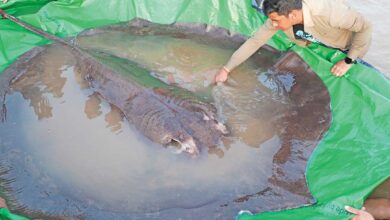Philippines Approves GMO Rice to Fight Malnutrition

A breed of rice genetically engineered to combat vitamin A deficiency has received approval from regulators in the Philippines.
Supporters say a variety known as golden rice could remedy a condition that kills up to 250,000 children each year worldwide and blinds twice that number, according to the World Health Organization.
It’s the first genetically modified organism (GMO) designed to fight a public health issue to get a green light from food safety officials in the developing world.
Golden rice has faced vigorous opposition from GMO opponents throughout its development, citing safety concerns and other issues. Protesters destroyed test fields in the Philippines in 2013.
The Philippine Department of Agriculture Bureau of Plant Industry announced in December 2019 that golden rice is as safe as conventional rice. Regulators in Australia, Canada, New Zealand and the United States have also cleared the grain of safety issues.
After 20 years of developing the rice, “it feels absolutely tremendous” to reach this stage, said Adrian Dubock, executive secretary of the Golden Rice Humanitarian Board, the nonprofit working to take the crop from the lab to the field.
Two added genes turn rice golden, one from maize and one from a soil bacterium. Under their direction, rice grains produce beta carotene, the vitamin A precursor that makes carrots and sweet potatoes orange. A third bacterial gene serves as a traceable marker.
In the Philippines, vitamin A deficiency among children increased from 15.2% in 2008 to 20.4% in 2013, despite a national supplement program, according to the Philippines-based International Rice Research Institute (IRRI), which is developing the crop.
Golden rice could provide up to half of a young child’s daily need for vitamin A, IRRI says.
CONTROVERSIAL CROP
Biotech boosters have presented golden rice as one of the best examples of what biotechnology can do, producing plants and animals that benefit humanity faster than conventional breeding can.
Opponents have said the crops raise unknown risks, though the scientific consensus is that GMO varieties on the market today are safe, including golden rice.
GMO critics are also wary that the for-profit corporations that have developed GMOs will have undue influence over the seed supply.
Agricultural biotech company Syngenta previously owned key patents for golden rice but has donated them to the Golden Rice Humanitarian Board. Dubock said golden rice strains are for use only by public and nonprofit crop breeding programs and would not cost farmers any more than conventional rice.
DIETARY SOLUTION
Critics say the considerable time, effort and money spent on developing golden rice would have been better spent pursuing efforts to diversify the diets of the people who suffer from malnutrition.
“There are very limited funds available for development … It really matters which route you choose to go, where you choose to put your funds,” said Bill Freese, science policy analyst at the Center for Food Safety.
Programs that get more fruits and vegetables into the diets of low-income people would help alleviate several chronic ailments, not just vitamin A deficiency, he noted.
Dubock agrees that “a diversified diet is the best solution,” he said. He added that golden rice is a tool that works with how people are already eating.
It’s not clear when Philippine farmers will be able to grow golden rice. Regulators still have to certify that the crop won’t cause problems in farmers’ fields. IRRI said it would submit its application in early 2020. Steve Baragona/Voice of America




